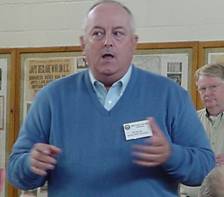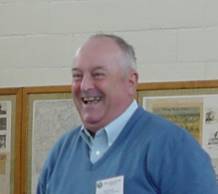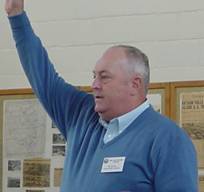| Out
From Behind the Desk In an interview with The First Shot, NRA National Coach Trainer H.Q. Moody talked about changes in coaching, and a little about what to expect in the future. A little background on H.Q. Moody, the NRA's National Coach Trainer, is in order just to see how much the world of competitive shooting has changed. Moody has been shooting competitively for 46 years. As Moody describes it, starting with JROTC in high school, "I grew up in the shooting world having never had a coach." Nowadays, 35 of 50 states require coaching certification for high school programs, and there is a national network in place for training and certifying coaches at all levels. Of course, starting with his assignment as the NRA's National Coach Trainer in 1994, Moody has played a significant role in bringing about many of these changes. This includes the formation of the National Coach Development Staff of top coaches from across the country who teach coach schools (which has grown from the original 19 in 1994 to over 80 coaches in 2003), redesigning programs and creating a national infrastructure. Building a more responsive national coaching program has also required a change in philosophy. As Moody put it, "In 1994, basically what we did was to sit behind a desk and ship out training materials to the field for coach schools. We don't do that anymore. We're actually involved in the programs. We're out in the field." He stated that in 1994, the NRA ran 18 to 20 programs, coach schools and clinics. In 2002, they ran 141 programs. Moody also emphasized that training coaches "is not a lecture process." Value is placed on practical application--students have to "demonstrate that they are capable of coaching to become certified." Moody pointed out some of the key issues that have shaped shooting sports coaching, and that will likely influence coaches training in the future: Addressing liability: As a result of problems in other sports, liability has become an issue for many shooting programs. According to Moody, however, formal coaching training is "a right step in the right direction" in addressing liability. Furthermore, liability could be seen as a contributing factor in making coach training more intensive. To become fully certified, coaches must now have first aid training, have shot in a match, complete the ASEP program (American Sport Education Program, and complete a practicum. Building character: Today, many junior programs emphasize the character building aspects of the sport. "As a coach, Iím not necessarily teaching shooting. Iím teaching discipline, Iím teaching integrity," said Moody. "Our rewards are not in the medals. They come in the form of graduations, accomplishment, of students coming back 15 years later to thank us for how we shaped their lives." Meeting a Growing Demand: Moody has seen a rise in the number of coaches from a low of 409 in 1995 to 1,274 appointed, certified and international coaches today. Furthermore, based on informal counts, Moody sees an average of 30 to 35 students in programs that he oversees. Yet, according to Moody, "we are only scratching the surface." One of the major challenges of training is "showing people that programs are not nearly as expensive as they think they are." Moody noted, in fact, that the costs of coach training are lower in shooting than in most other sports. |
 HQ at the October leadership conference at Camp Perry--the kind of guy who will never stand behind a podium or sit behind a desk  
|